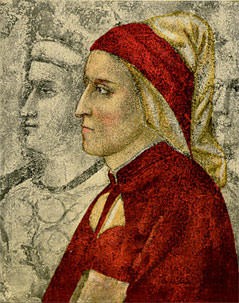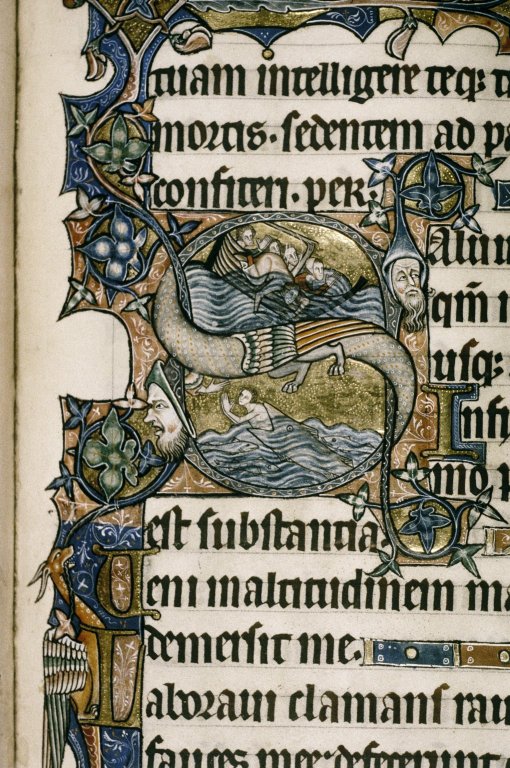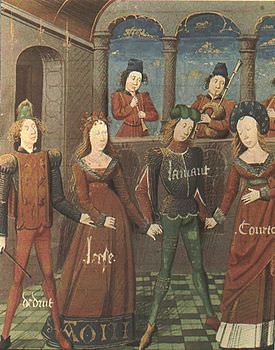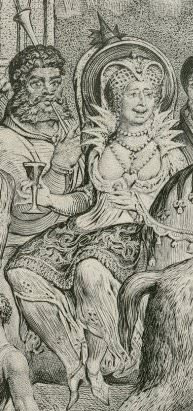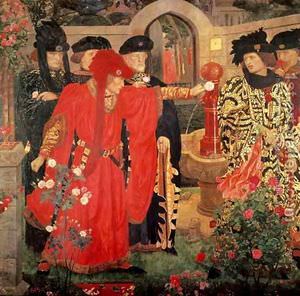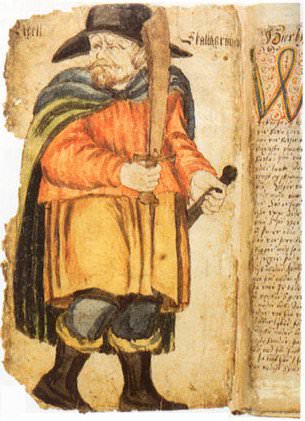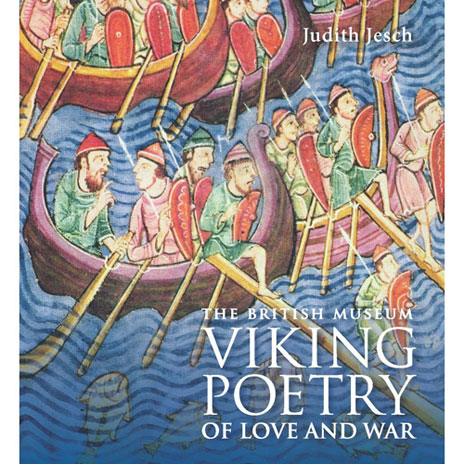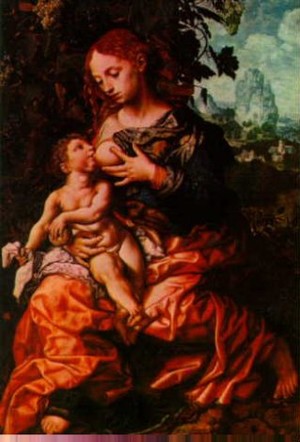Sylvia Plath’s Use of Dantean Structure
Many people have remarked on the genius of Sylvia Plath’s poetry. However, it has come to my attention that Plath has been grossly misunderstood by her critics, such as the famous critic, Harold Bloom who left Plath out of his book The Western Canon.
The Crown in the Nibelungenlied
Among the many unsolved problems which continue to exercise the mind of the student of the the one receiving directly Nibelunmgenlied, and indirectly the greatest attention today is that of the positiontaken by the Nibelungenlied in relation to the other poetical works of the period in which it was given its final form.
“The Taint of a Fault”: Purgatory, Relativism and Humanism in Sir Gawain and the Green Knight
“The Taint of a Fault”: Purgatory, Relativism and Humanism in Sir Gawain and the Green Knight Bill Phillips Revista Alicantina de Estudios Ingleses, No.…
Gower’s “Confessio” and the “Nova statuta Angliae”: royal lessons in English law
In the following discussion, I will explore some hitherto unexamined links between the Confessio Amantis and one of these legal texts, the Nova Statuta Angliae or New Statutes of England, which circulated among professional and non-professional readers in the 1380s and 1390s and which Richard II received in a manuscript now in Cambridge: St. John’s College MS A.7.
Seasonal Setting and the Human Domain in Early English and Early Scandinavian Literature
Seasonal Setting and the Human Domain in Early English and Early Scandinavian Literature Paul Sander Langeslag University of Toronto: Doctor of Philosophy, Centre for…
Literature, Logic and Mathematics in the Fourteenth Century
This thesis assesses the extent to which fourteenth-century Middle English poets were interested in, and influenced by, traditions of thinking about logic and mathematics.
Time, consciousness and narrative play in late Medieval secular dream poetry and framed narratives
This thesis proposes to look at the equation between time and text in the later medieval period. Time-telling and tale-telling have a particularly dynamic relationship in the considers time-telling and temporal referencein an era (c.1230 – 1500) that time-measurement multiple cultural experiencesa greatvariety of types of and
attitudes to time.
Poultry and Predators in Two Poems From the Reign of Charlemagne
Poultry and Predators in Two Poems From the Reign of Charlemagne By Jan Ziolkowski Denver Quarterly Volume 24, no. 3 (1990) Introduction: Were…
Shadow and Paradoxes of Darkness in Old English and Old Norse Poetic Language
This thesis confronts, explores, and attempts to meaningfully interpret a surprising nexus of stimulating cruces and paradoxes in Old English poetry and prose and Old Norse skaldic and Eddic poetry.
When Latin gets sick: mocking medical language in macaronic poetry
Since, at the time of the rise of macaronic poetry, Latin was the language of learn- ing, including medicine, it is expected that an analysis of the Latin in macaronic poetry and its interaction with other linguistic varieties in the same, can reveal changes in the relative social position of various groups.
Wild woman and her sisters in medieval English literature
The subject of this work is the concept and figure of the Wild Woman. The primary focus will be on various forms this figure assumes in medieval English literature: Grendel’s mother—the second monster Beowulf faces—and Chaucer’s Wife of Bath, along with other figures.
The Dragon and the Storm The Saracen anti-knight in Orlando furioso and Gerusalemme liberata
The Dragon and the Storm The Saracen anti-knight in Orlando furioso and Gerusalemme liberata Cam Lindley Cross University of Chicago, March 8 (2011) Abstract When…
Mapping Scottish Identity in the Roman de Fergus
In the Roman de Fergus, a thirteenth-century verse romance in Old French, Guillaume le Clerc considers the consequences of Arthur’s assimilationist expansionism with a more focused attention to cultural difference and personal identity, again centered on the experience of a knight from Galloway, the eponymous
What Seamus Heaney Did to Beowulf : An Essay on Translation and Transmutation of English Identity
Heaney’s Beowulf provides us with a great deal which other translations do not: a poetic fluency rendered in Modern English, a skilled understanding of linguistic choices, and most importantly, a consciousness of the translative act which negotiates fluidly between modern perspectives and Anglo Saxon artistry.
Impregnable friendship : locating desire in the middle English ‘Amis and Amiloun’
Scholarship on Amis and Amiloun has generally been divided into two critical schools. The majority of critics have read the work as an exemplar of perfect friendship, overlooking (or ignoring) any trace of homoeroticism, citing the possibility itself as anachronistic, or explaining away its presence by offering historical or theoretical justification for intimacy among medieval men.
A short exploration of the inauguration of kings in late medieval Ireland, and its depiction in bardic poetry
The status and image of a king was, at least partially, derived from the sacral king of sagas, such as that of Niall Noígiallach. In these sagas it is conveyed that under a righteous and unblemished king of royal ancestry there is peace and prosperity…I will give an overview of the elements of these ceremonies, the sources in which they are mentioned, and the developments during the high and late medieval period.
‘Cast out into the hellish night’: Pagan Virtue and Pagan Poetics in Lorenzo Valla’s De voluptate
Valla wrote about Epicureanism before the Renaissance rediscovery of classical Epicurean texts. Poggio Bracciolini had not yet circulated his newly-discovered manuscript of first century Epicurean philosopher Lucretius’ De rerum natura, and Valla wrote without access to Diogenes Laertius’ Lives of the Philosophers, which discussed Epicurus’ teachings in greater detail.
Human Monstrosity in Terminator II: Judgement Day, Beowulf and The Passion of St Christopher
The idea of a humanoid monster that can be reluctantly empathized with can be traced back to various source texts. For example, Grendel in the Anglo-Saxon epic poem Beowulf is a bloodthirsty savage, however upon a close reading of the poem he appears more human.
Welsh Poetry and the War of the Roses
This is a brief summary of a paper on Welsh poetry, patronage and politics. It was given at the Celtic Studies Association of North America Annual Conference at the University of Toronto April 18 – 21, 2013.
Medieval Astrology and The Buke of the Sevyne Sagis
It is useful to begin by comparing the way the sages are initially described to the Emperor in the Latin, Middle English, and Middle Scots texts. Although the Middle Scots text is not connected to the English ones, they serve as a useful backdrop to illustrate the singular nature of the Scottish version of the story.
The “Battle with the Monster”: Transformation of a Traditional Pattern in “The Dream of the Rood”
Thus, although I would not suggest that “The Dream of the Rood” was composed orally in performance, it is, I would contend, oral-derived, and it is that presumption upon which this analysis is founded. The poem, in other words, straddles both worlds, having ties to both textuality and orality.
Heorot and the Plundered Hoard: A Study of Beowulf
Time and again the Beowulf poet’s choice of words and details reveals that he practised his craft within a tradition in which his creativeness was bound and disciplined by the objectiveness of a particular structure of images. We perceive in all the rich variety of his work the unifying effect of the typological imagination. It is in the typological mode of Beowulf that the key to its meaning and artistry is to be found.
Egil Skallagrimsson and the Viking Ideal
How did the Vikings want to be perceived–by other members of their own culture, and by posterity?
Viking poetry of love and war – new book by Judith Jesch
They are most famous for being violent invaders of foreign shores but a new book by a University of Nottingham Viking expert shows they were also poetry lovers with a wicked sense of humour!
The Persuasive Power of a Mother’s Breast: The Most Desperate Act of the Virgin Mary’s Advocacy
The image of the Virgo Lactans orMaria Lactans (the image of the Virgin Mary suckling the Child Jesus), which occurs as early as the third century in the catacomb of Priscilla inRome, later spread ing across Europe, is found in a number of Irish sources.
